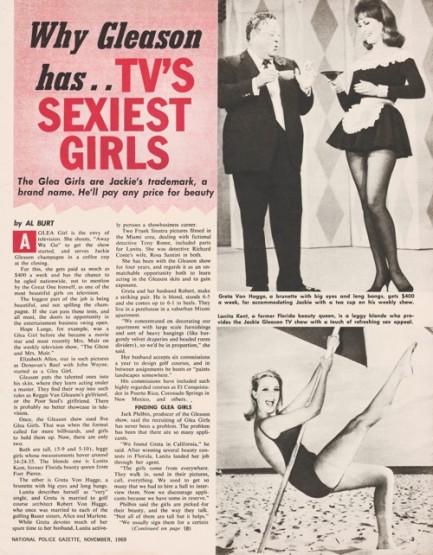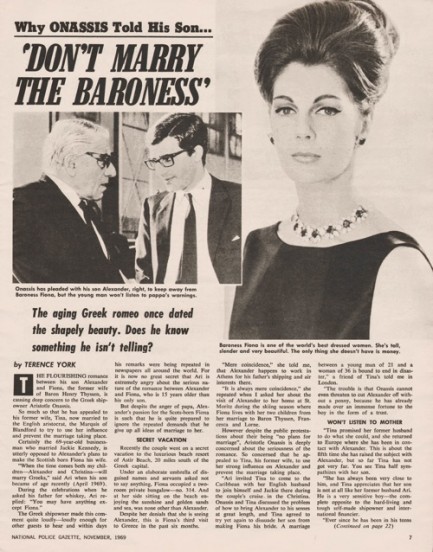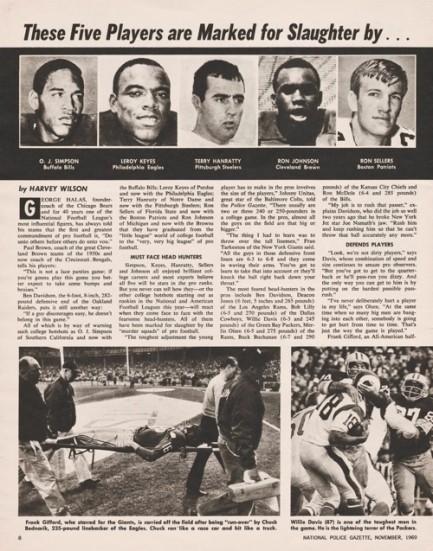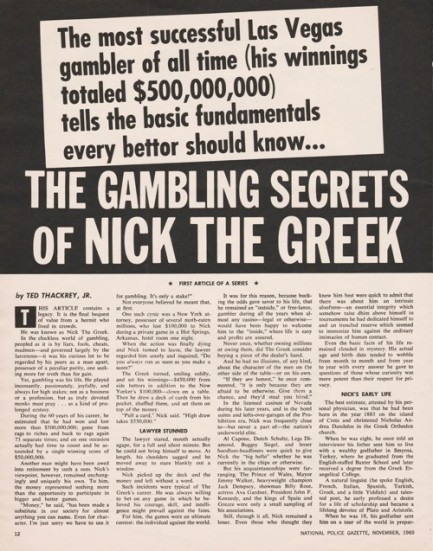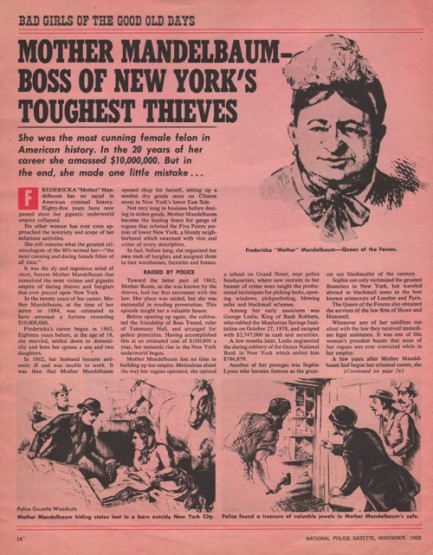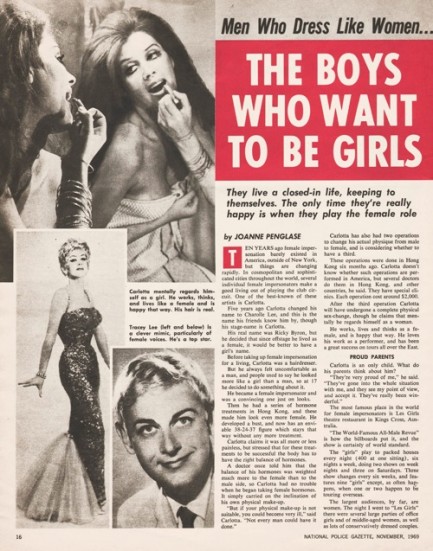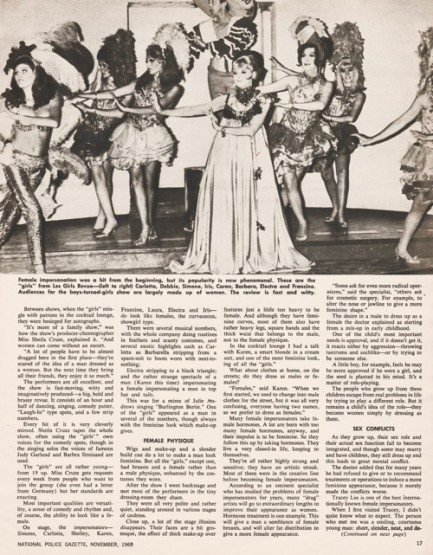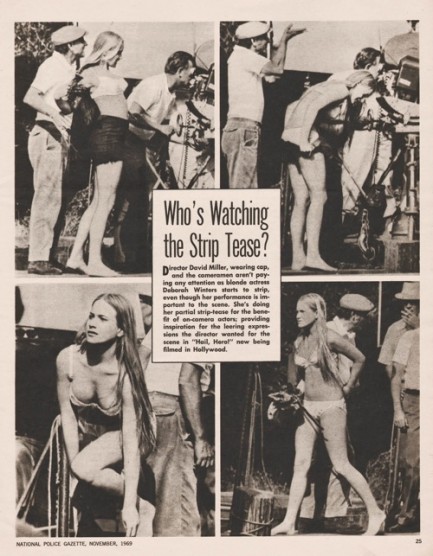| Femmes Fatales | Nov 19 2023 |


| Vintage Pulp | Mar 31 2023 |


Something unusual we ran across recently. Above you see a Yugoslavian poster for Afrička veza, an Italian film originally made in 1973 as Contratto carnale, released in English as The African Deal, and shot in Ghana. The poster is unusual because, though its text is Croatian, the actual art very much echoes vintage Ghanaian movie posters, such as here and here. We've never seen a Yugoslavian poster in this style. Our opinion is that because the movie was made in Ghana and was certainly released there at some point, the art was painted for a Ghanaian poster then borrowed by the Yugoslavian distributors Inex Film. We talked about Contratto carnale a few years back. It starred George Hilton, Calvin Lockhart, beautiful Anita Strindberg, and yummy Yanti Somer, was originally released in 1973, and premiered in Yugoslavia sometime in 1976.
| Femmes Fatales | Apr 10 2018 |

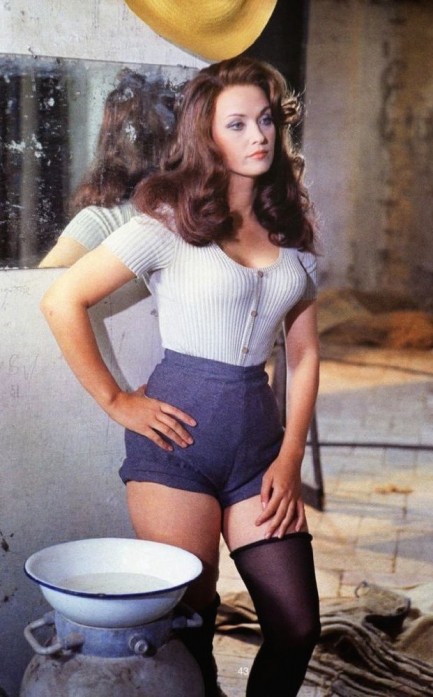
In the promo photo above Femi Benussi appears in costume—in amazing costume—as Lola in the film Il domestico. Benussi was born in Rovigno, Italy, which is now Rovnij, Croatia, and debuted in 1965's Il boia scarlatto, aka Bloody Pit of Horror. She went on to appear more than eighty films, including the giallo Nude per l'assassino, aka Strip Nude for Your Killer and the actioner Storia di sangue, aka Blood Story. The above image is from 1974, and just to make Benussi's outfit complete it also came with a hat, shoes, and a bruise courtesy of the makeup department, below. As we continue to work our way through various 1970s schlock classics you can be sure that Benussi will show up here again.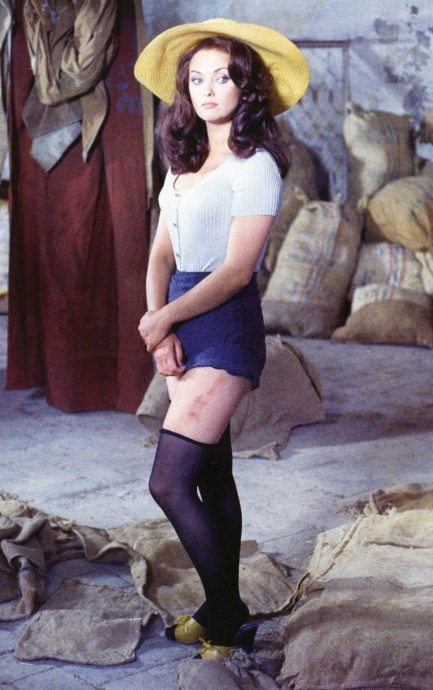
| Sex Files | Sep 18 2017 |

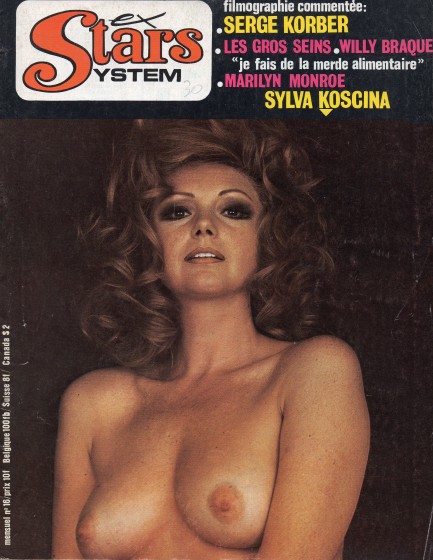
On the cover and in the centerfold you see Croatian born star Sylva Koscina (a mainstream actress), and elsewhere you get Emmanuelle Parèze (porn), Dany Carrel (mainstream), Valérie Bosigel (mainstream), Karin Schubert (both), Catherine Spaak (mainstream), Ornella Muti (mainstream), Chesty Morgan (porn, obviously), Marilyn Monroe (mainstream, though some scam artists claim she was the other too), et al. They don't make magazines like this anymore, because they don't make cinema like this anymore. Sex in U.S. movies is strictly taboo, unless, generally speaking, the actors keep their clothes on. You do see it on cable television, however, though such shows generate reams of online criticism about how terribly wrong it is (we agree, however, that more sex and nude scenes need to be filmed from the vantage point of the female gaze). In Europe, as always, things are a bit more liberated.
We aren't sure how long Sex Stars System published. It debuted in 1975. Also in 1975, or possibly 1976, a magazine called simply Stars System appeared. Stars System had a softer editorial approach and featured solidly mainstream cover celebs such as Jane Fonda and Romy Schneider. At some point it changed its name slightly to Star System and, thus rebranded, published at least as late as 1982, which seems to be longer than Sex Stars System was on the scene. The information online about these magazines is, as you can probably guess, a jumble, but we'll keep looking into it and maybe have something more concrete to report later. There's also a Star System celeb magazine around today, but it's Canadian and presumably unrelated. Many scans below, and we have a few more issues we'll post later.
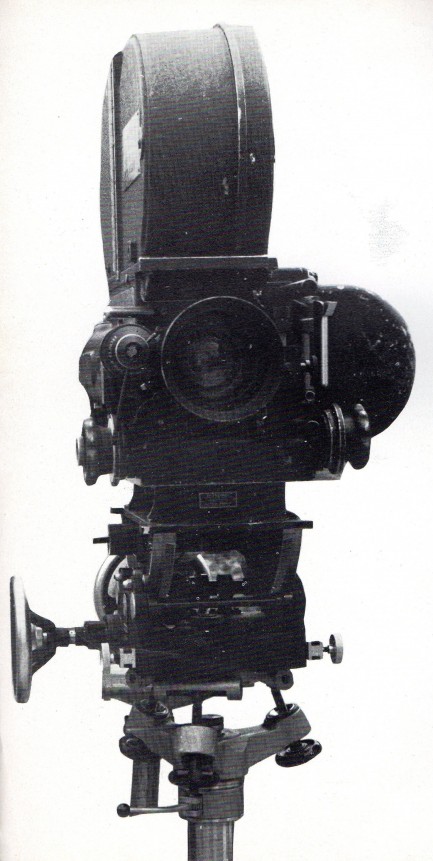
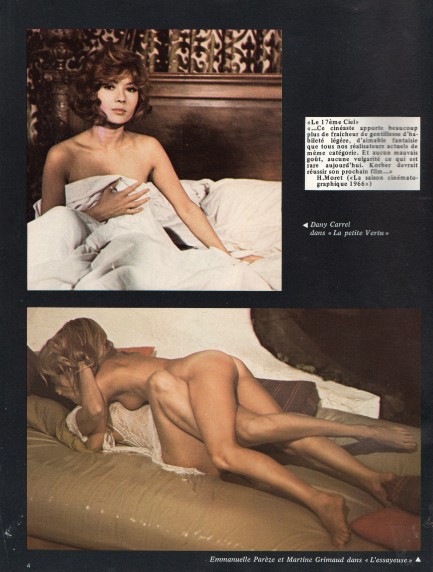
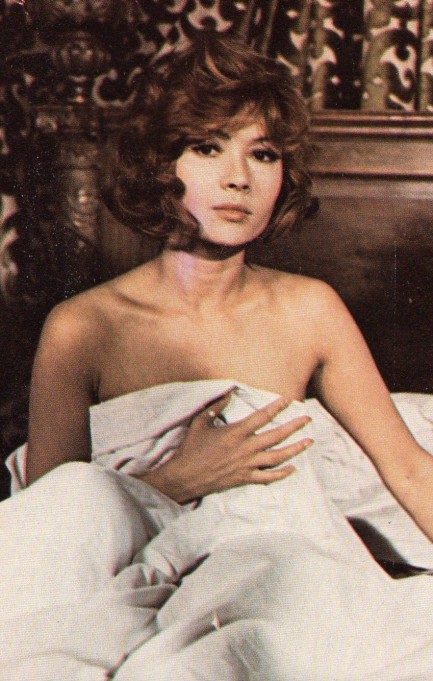
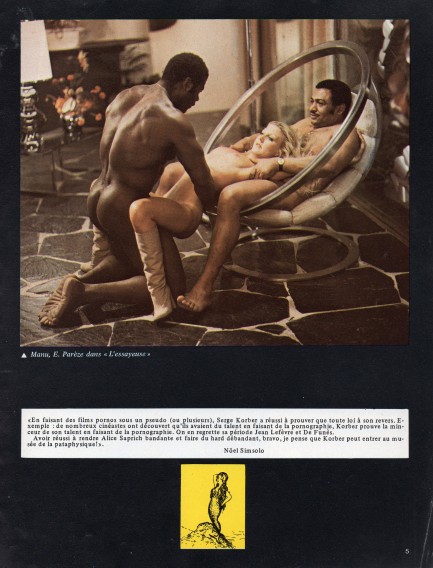
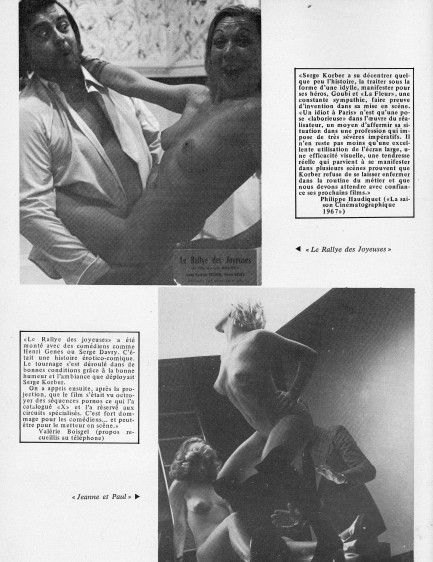

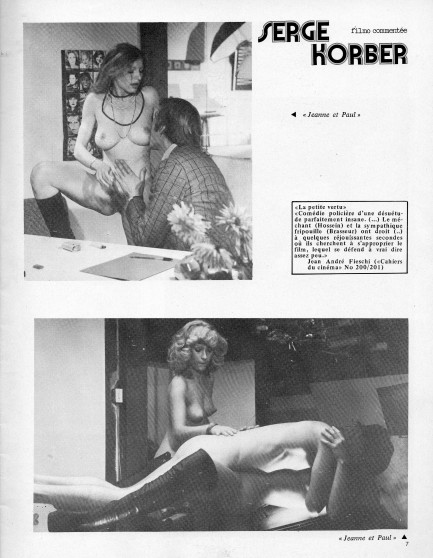
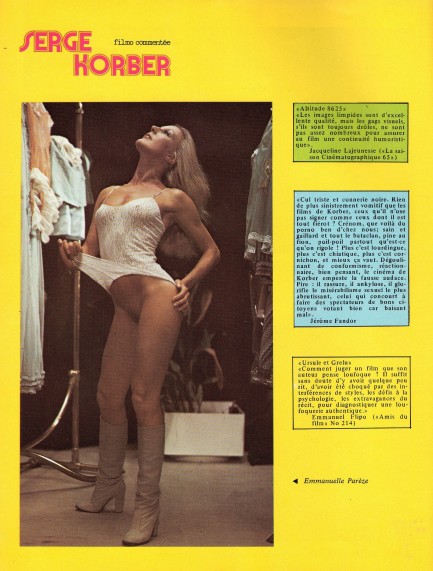

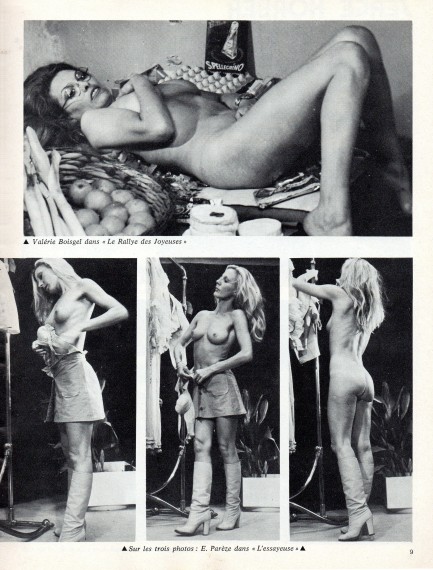

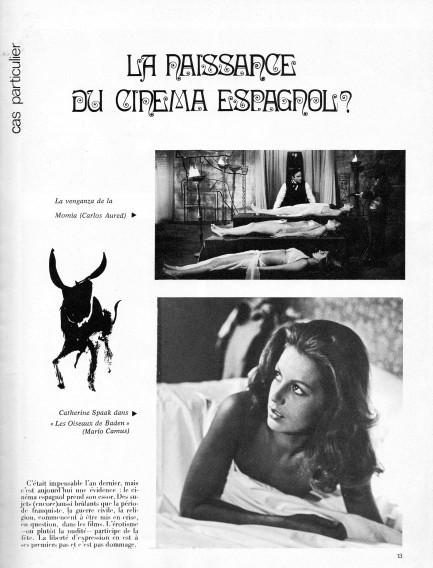
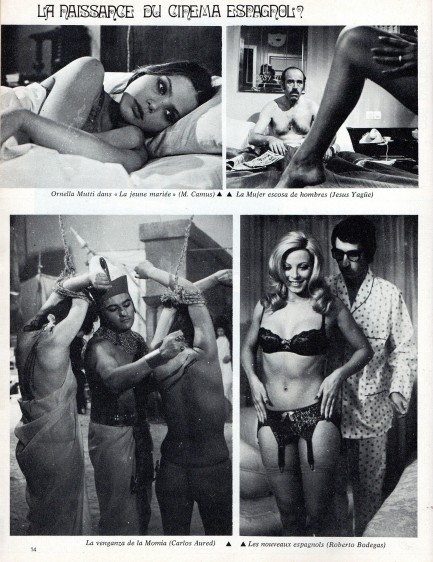
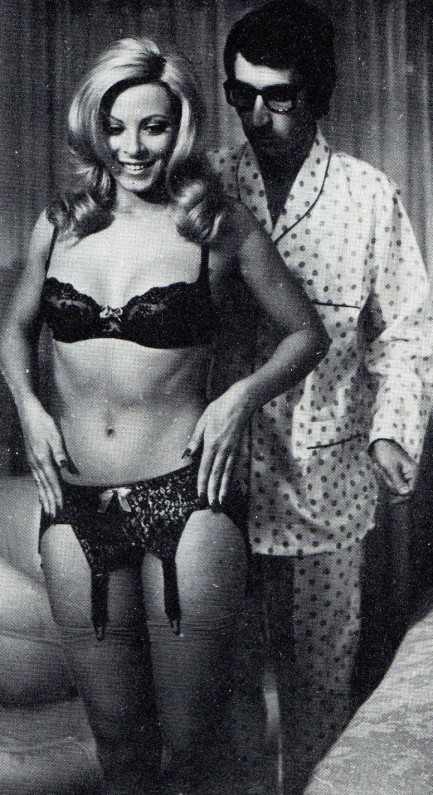
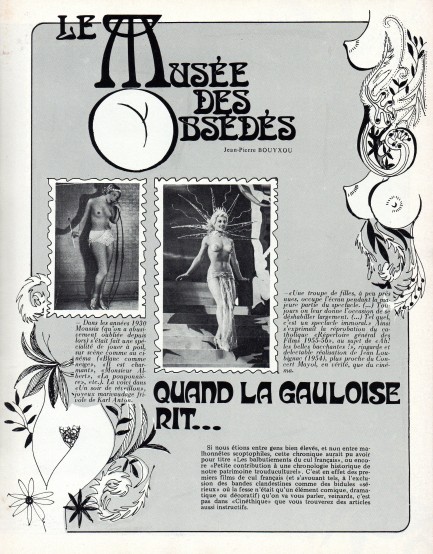
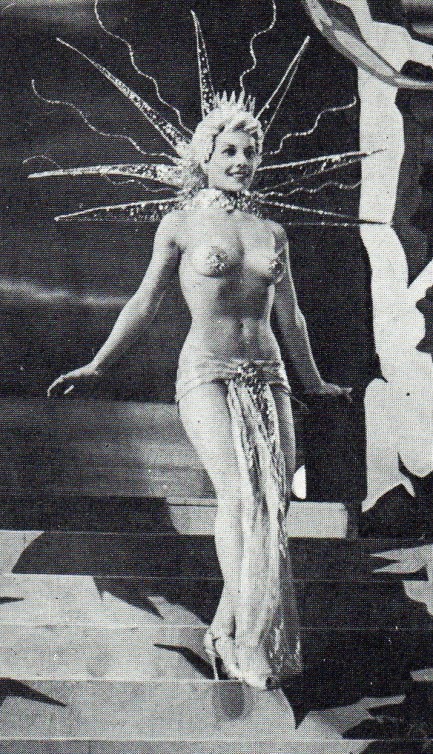
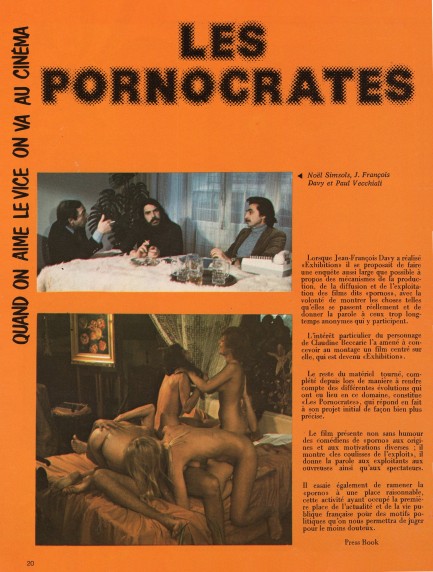
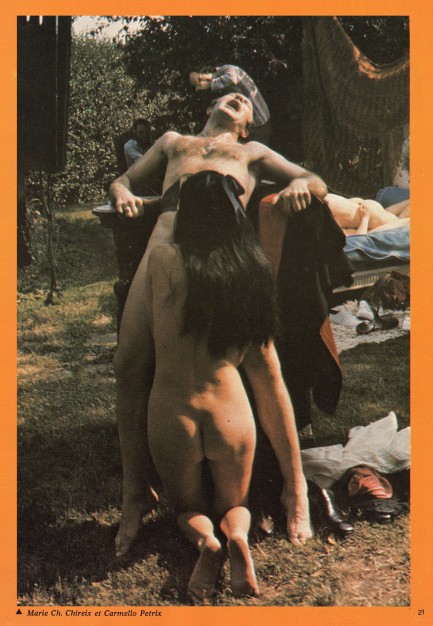
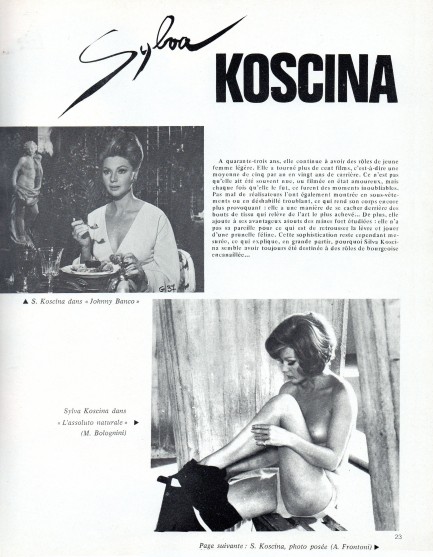

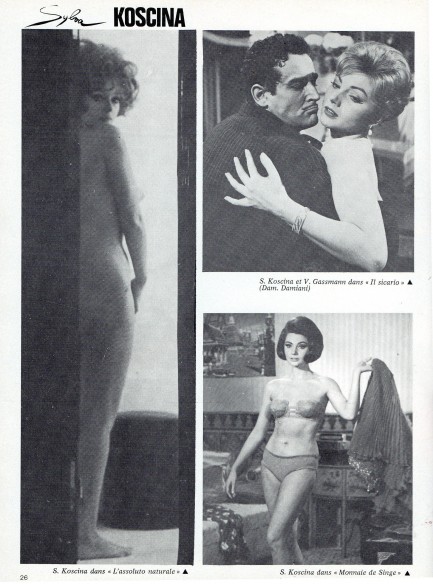

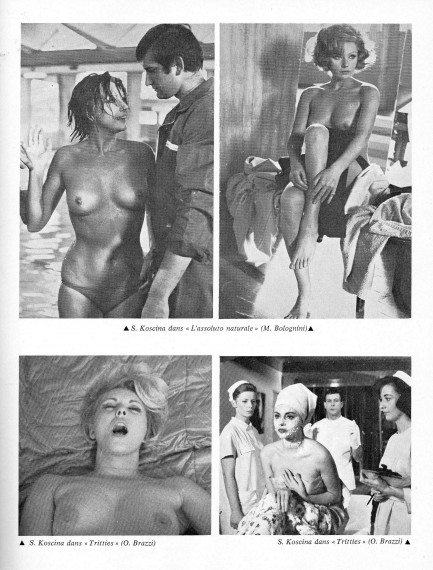

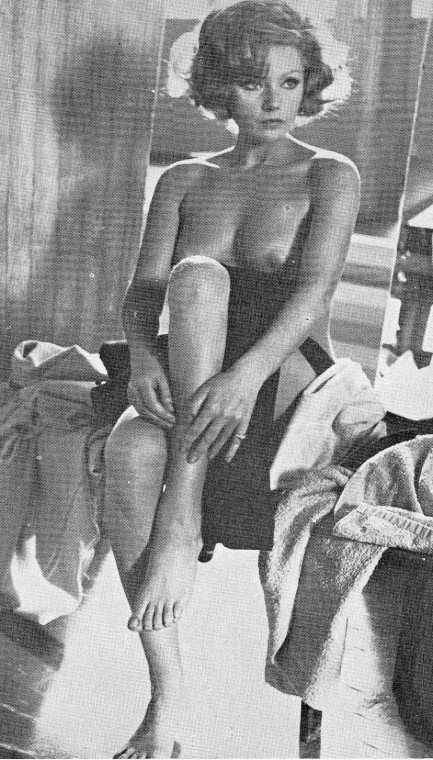

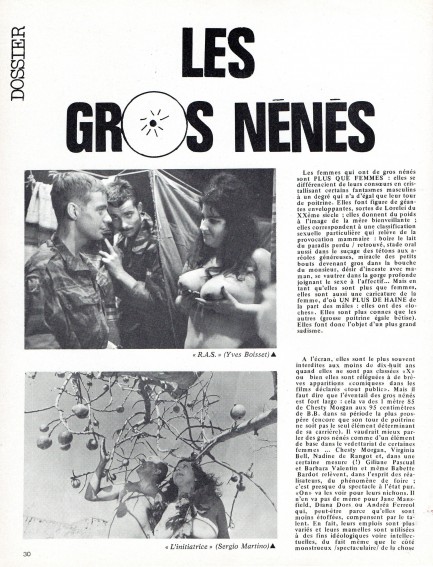

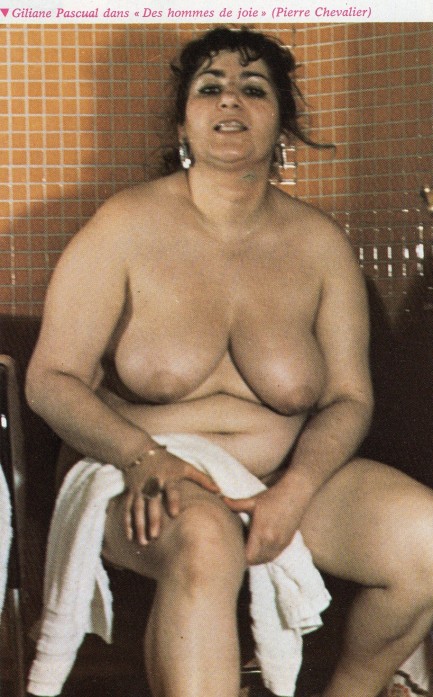
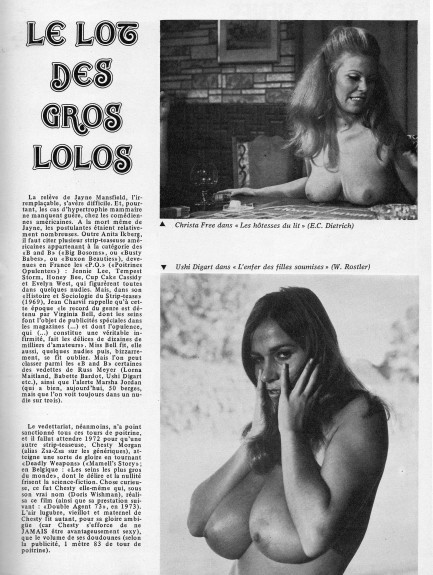

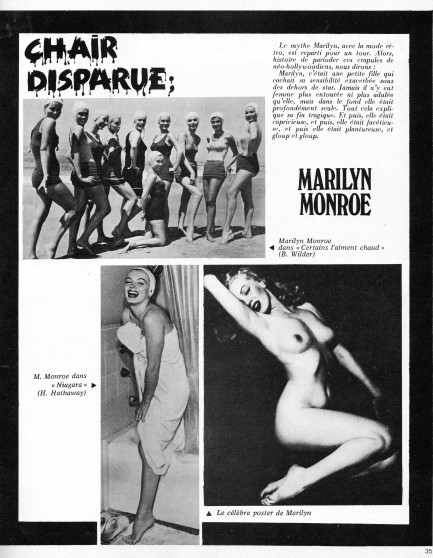
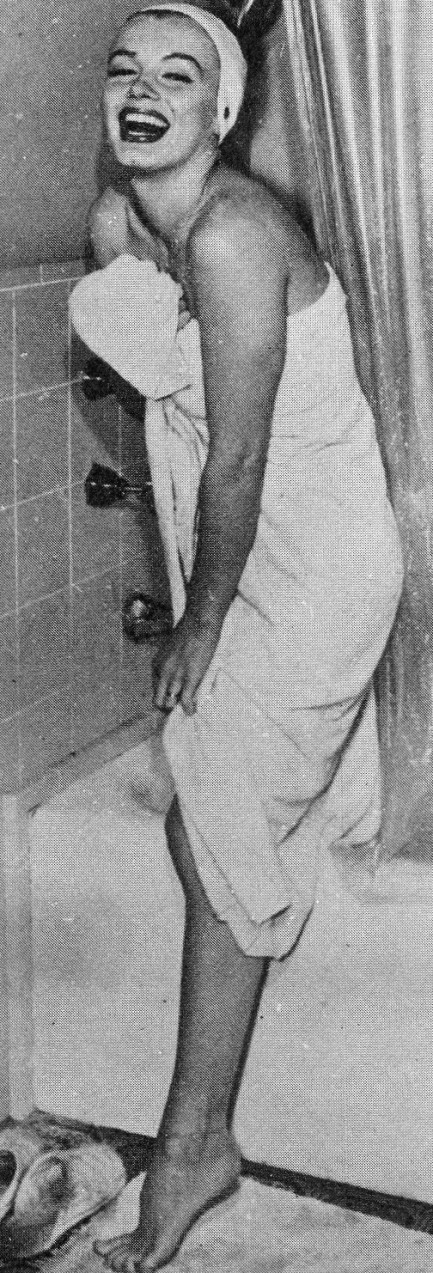
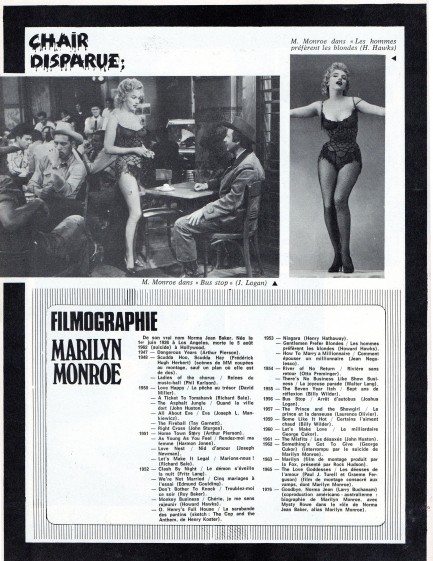
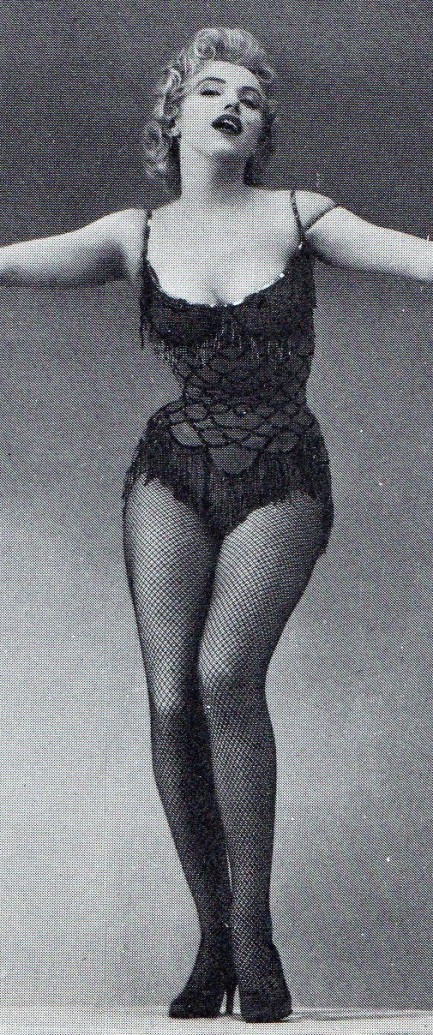
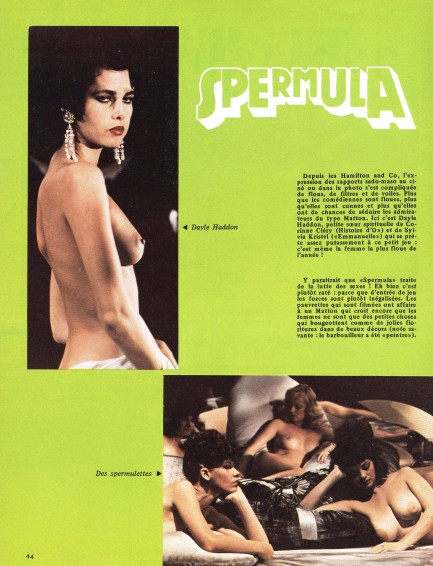

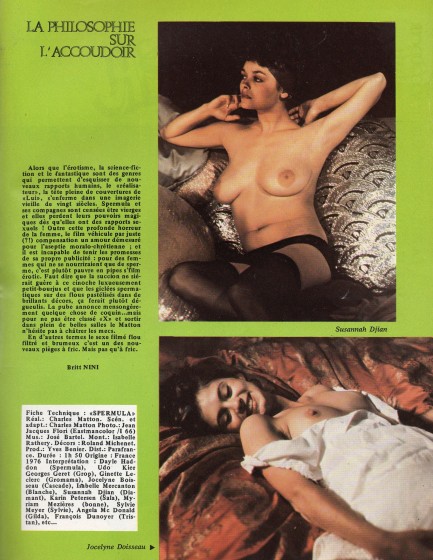
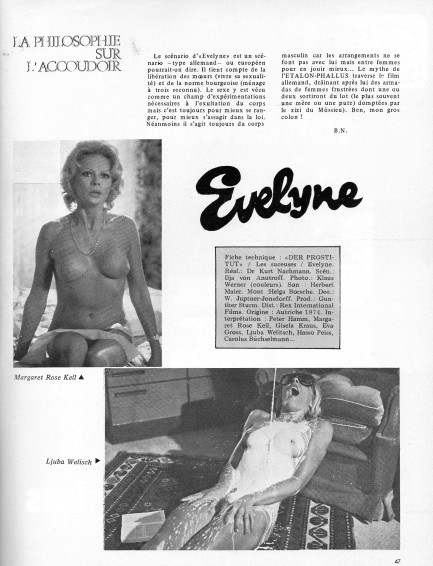

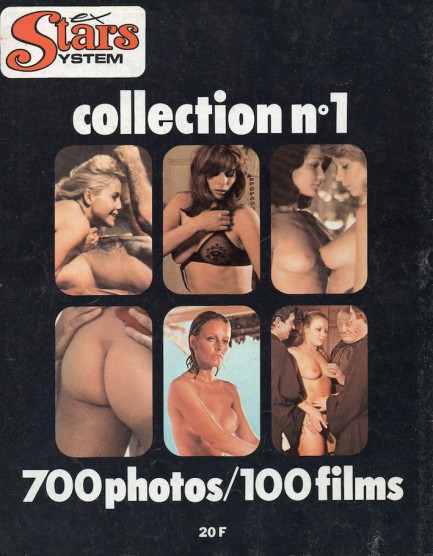
| Vintage Pulp | Jan 20 2016 |

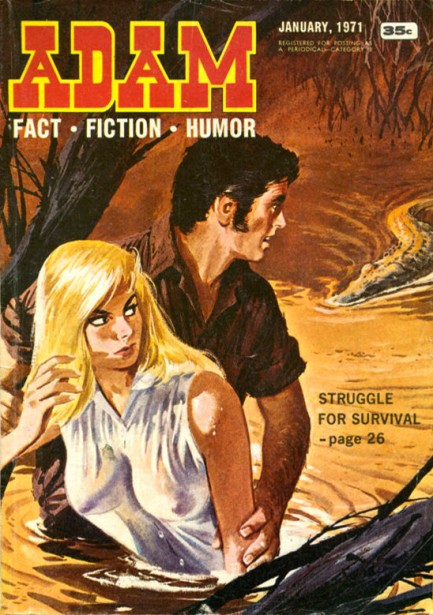
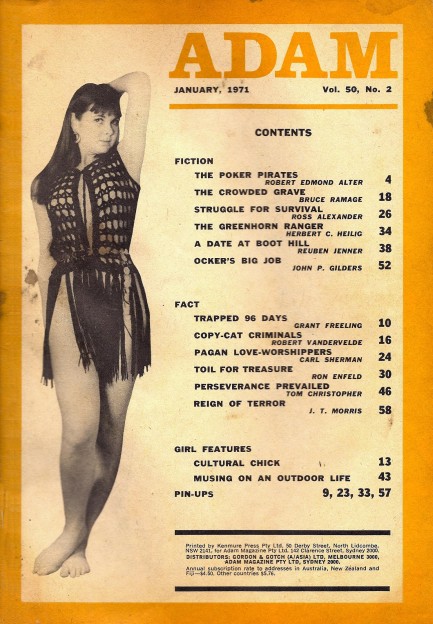

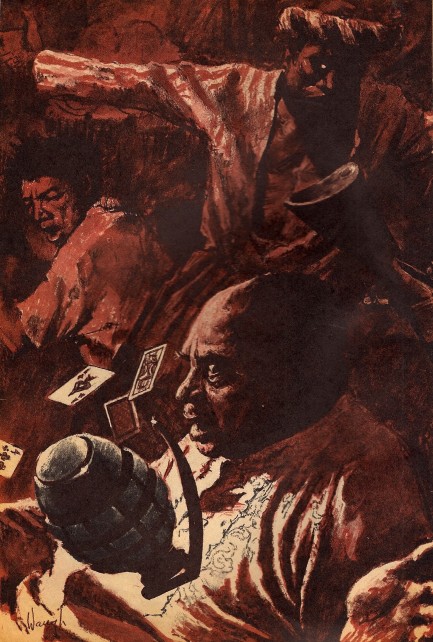
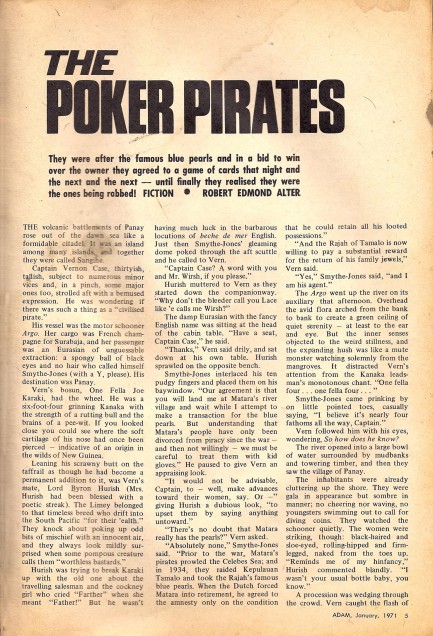
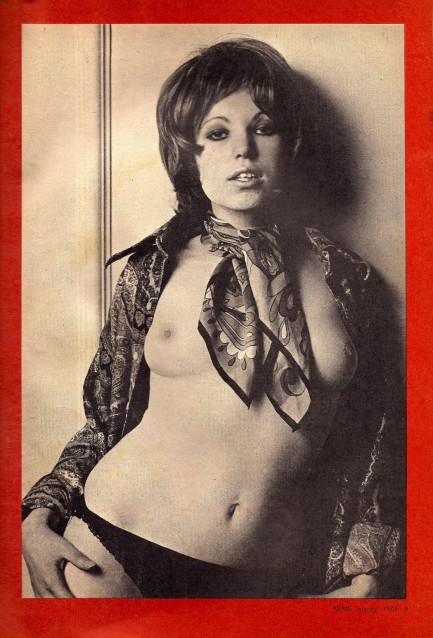
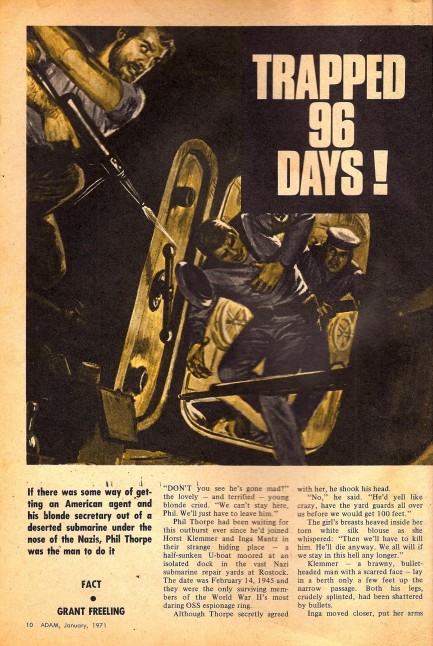
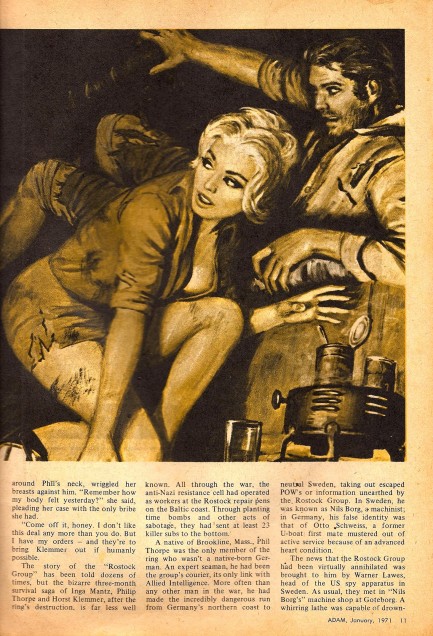
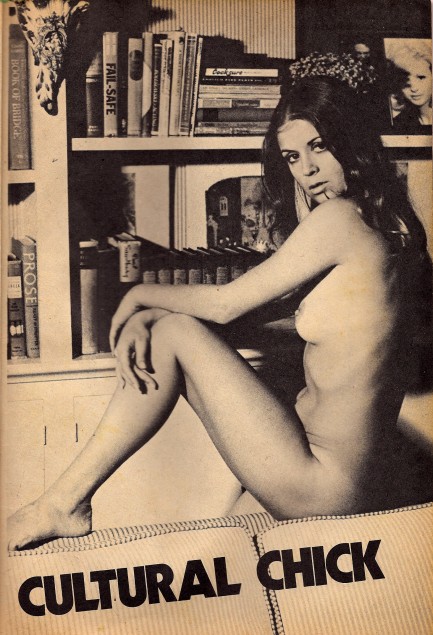


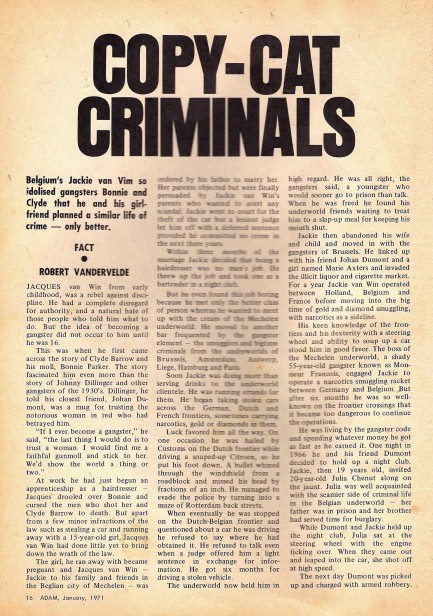
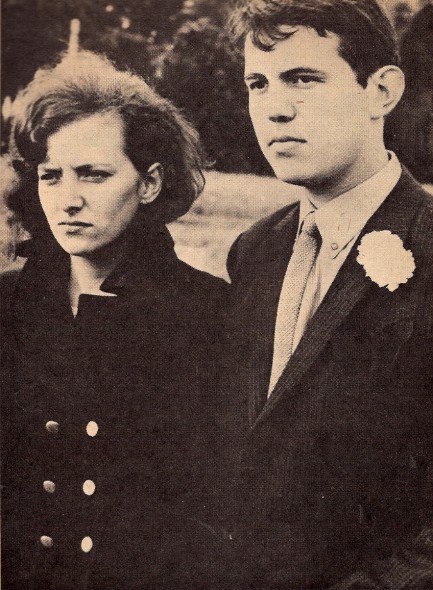
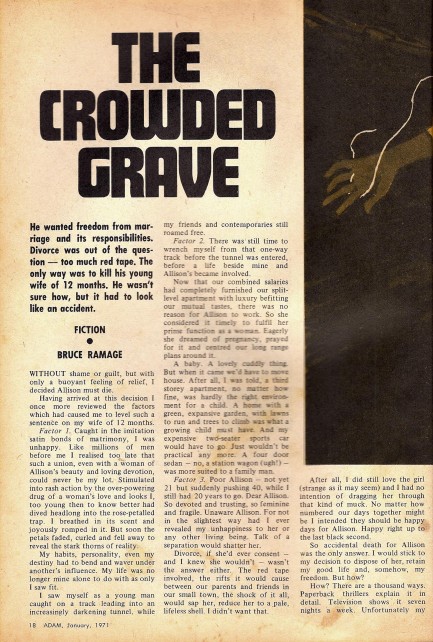
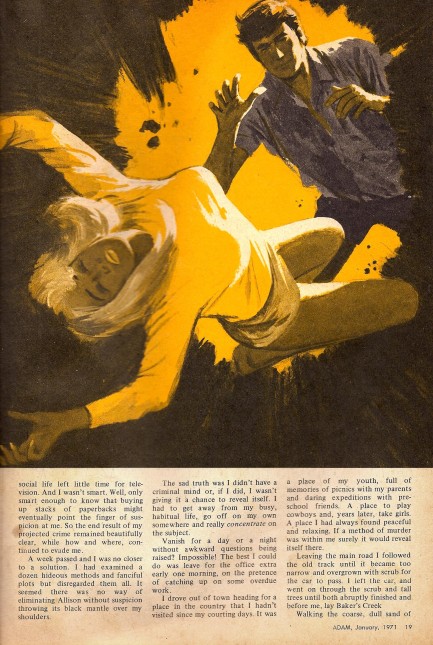
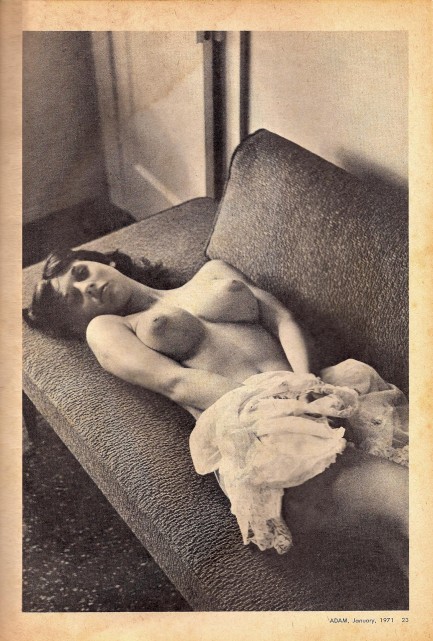
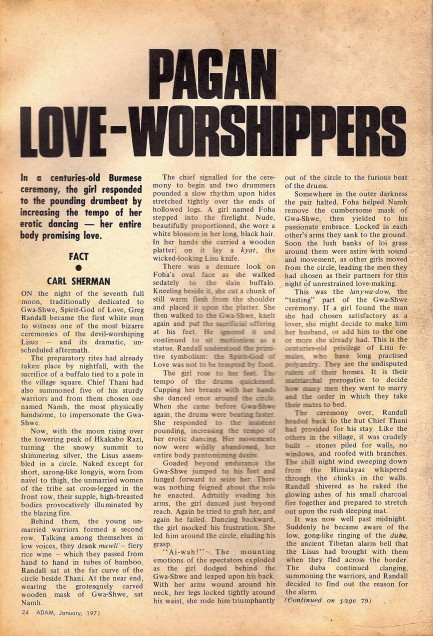
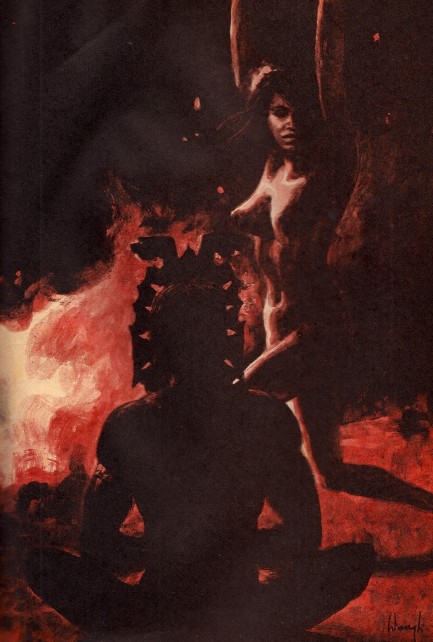
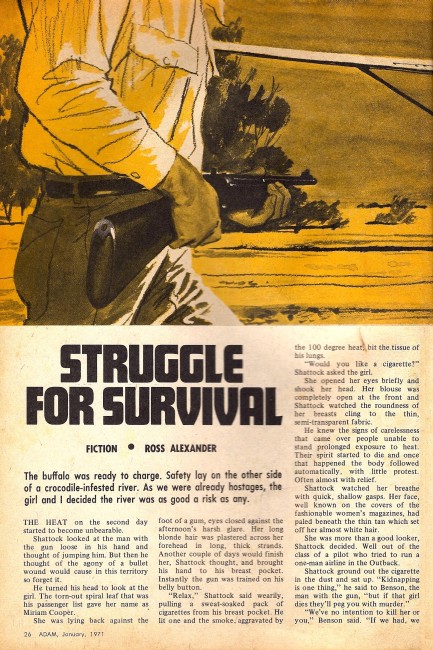
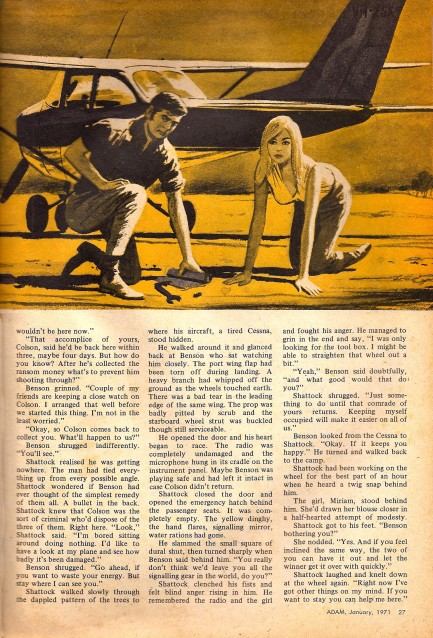
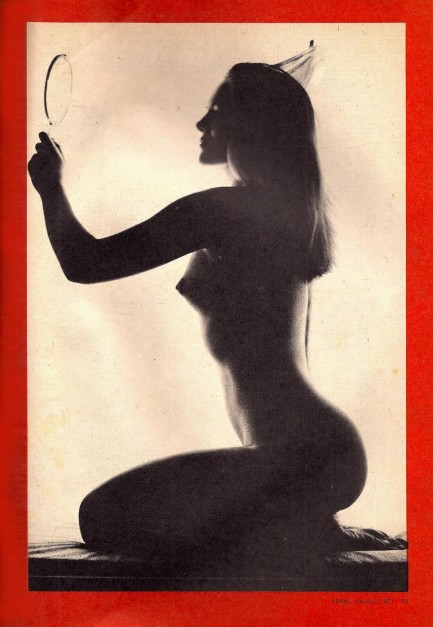
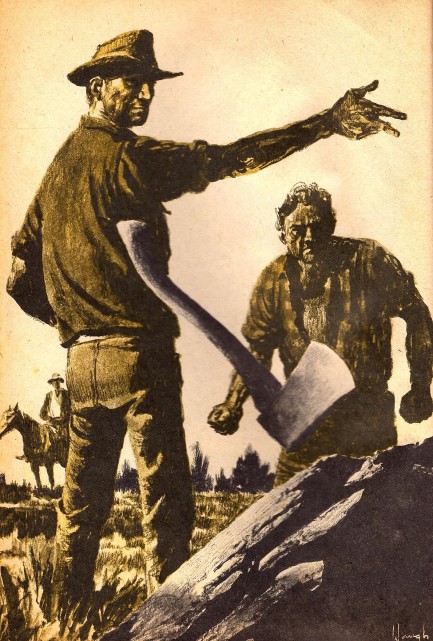
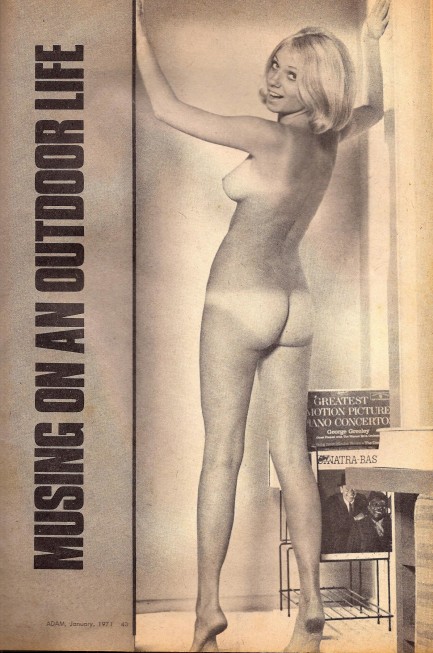
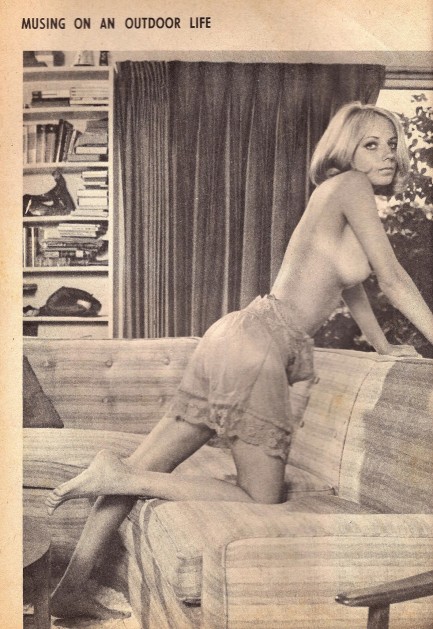
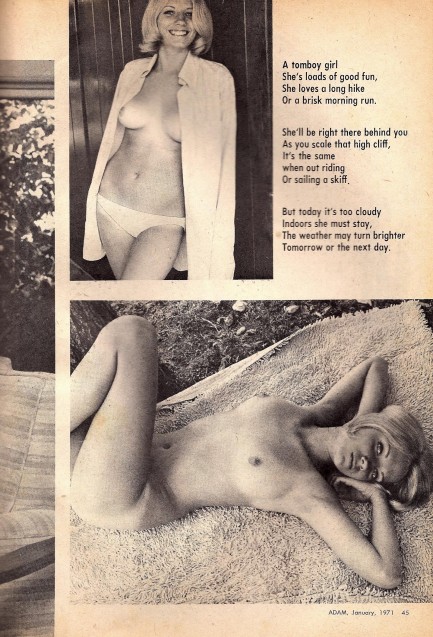
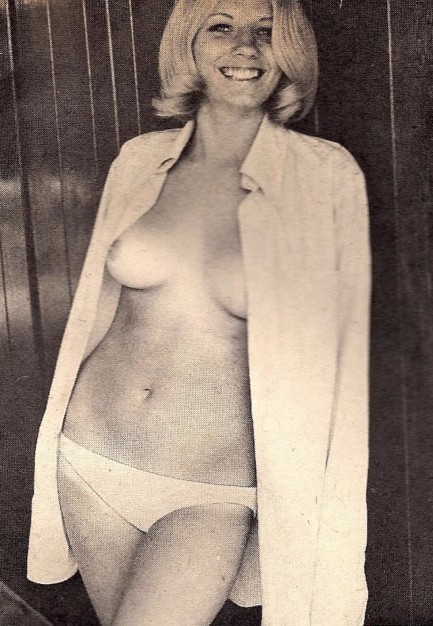
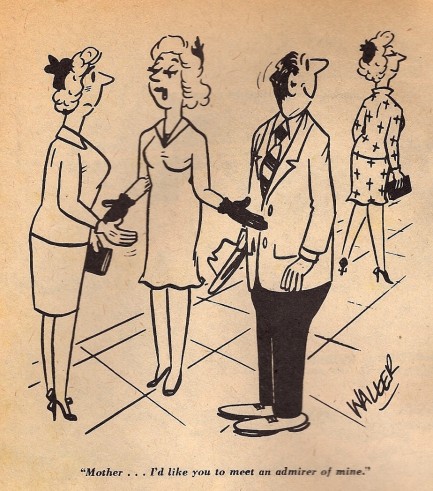
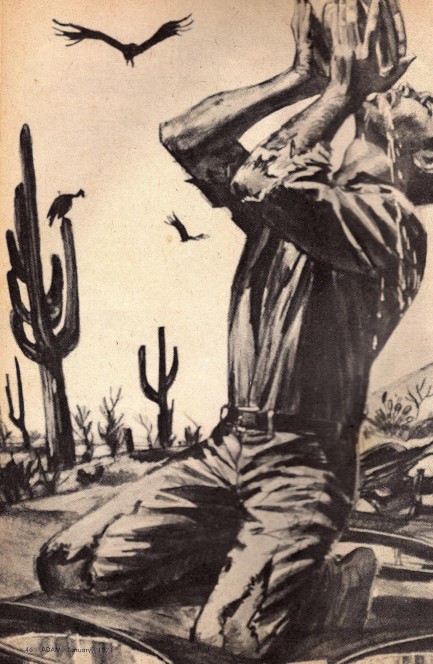
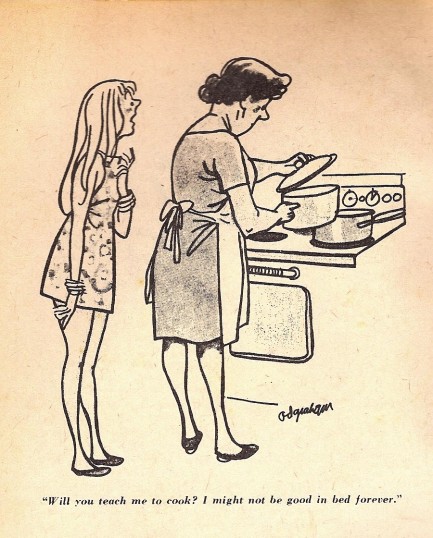
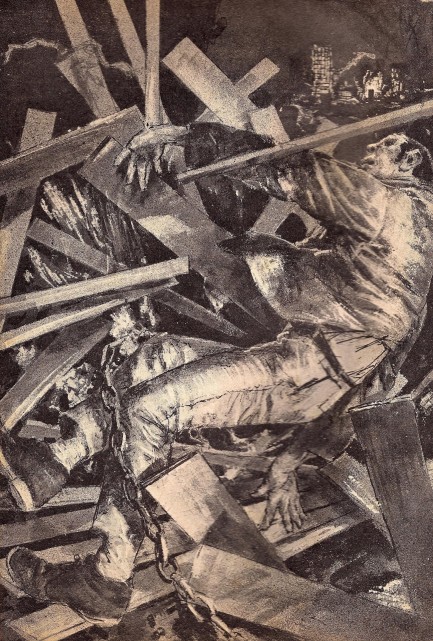
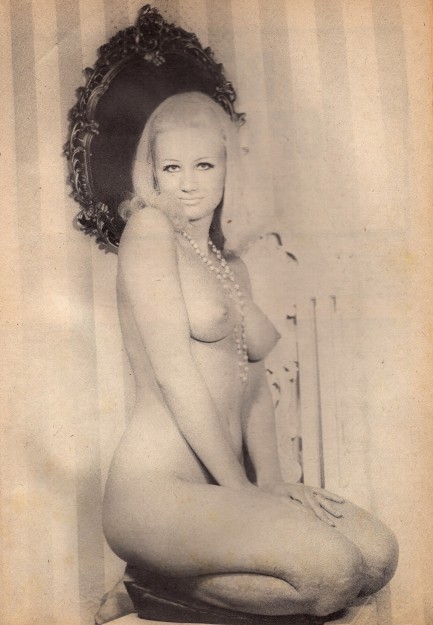


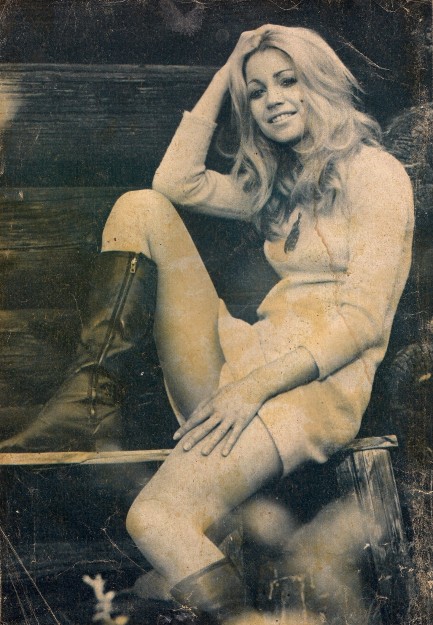
Above, assorted scans from Adam magazine of January 1971, with cover art illustrating Ross Alexander’s story “Struggle for Survival,” about two kidnap victims in Northern Australia who decide after days of captivity that their only route to escape is across a crocodile infested river. Naturally, what began as obstacles become allies, as the crocs eventually chow down on the villains. You get lots of photos, including one of Croatian born actress Femi Benussi, three panels from the bottom. You can see forty-two more issues of Adam by clicking its keywords just below.
| Vintage Pulp | Jan 19 2015 |

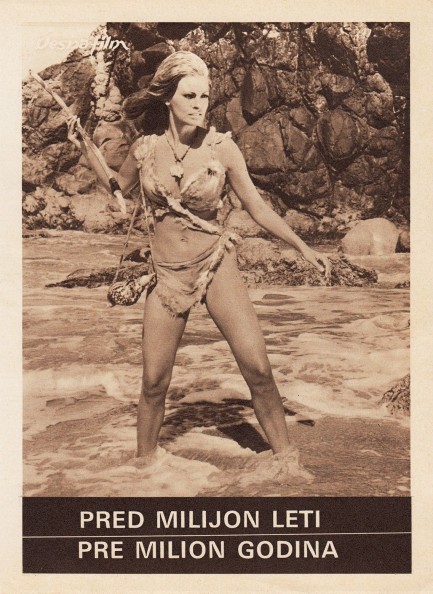
We’re looping back to the former Yugoslavia today, this time with a rare film program for Raquel Welch’s One Million Years B.C. If it seems we just talked about this movie, you’re right. We shared a promo from the film last week. What you see above is the front of a dual language promo pamphlet, half written in… well we aren’t sure. The language situation is complicated there. Half in Serbo-Croatian and half in Slovenian, we think. Feel free to correct us. In any case, it’s a pretty cool little item.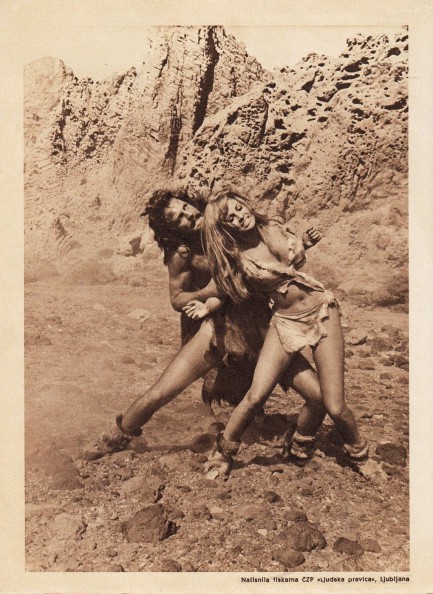
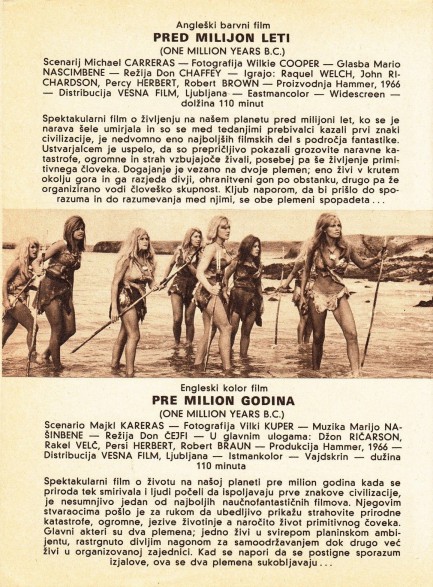

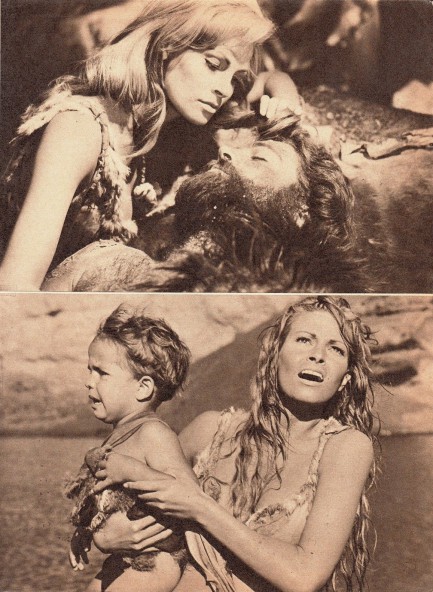
| Intl. Notebook | Jan 15 2015 |


| Intl. Notebook | Jun 6 2014 |


Today is the 70th anniversary of D-Day—the Allied landings in Northern France—and since most observances take the same form, we thought it would be a good opportunity to look at the event from a different angle by sharing something you might not see anywhere else. So above and below are some front and back covers of Signal, a German propaganda magazine printed from 1940 to 1945 and distributed in neutral, friendly, and occupied countries. These are from Yugoslavia, and their text is Croatian. Glancing at the images is to marvel at the always yawning chasm between propaganda and reality, for though Signal showed Hitler’s soldiers defeating foes while winning hearts and minds, when most of these were printed his army was not only the most hated entity in the Western world, but was already in the process of being fatally smashed in the crucible of a bitter Russian winter against a hardened foe that had always considered ice, snow, wind and frostbite its most important allies.
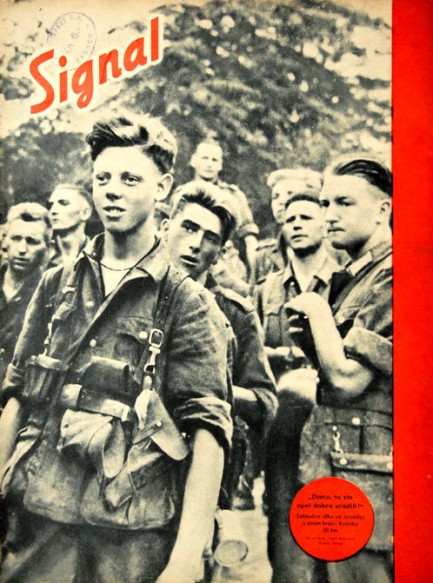


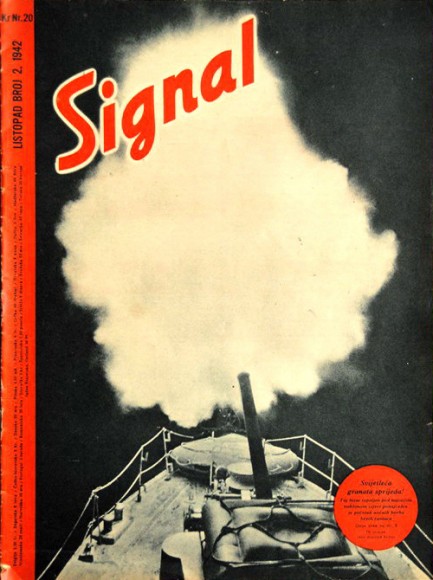

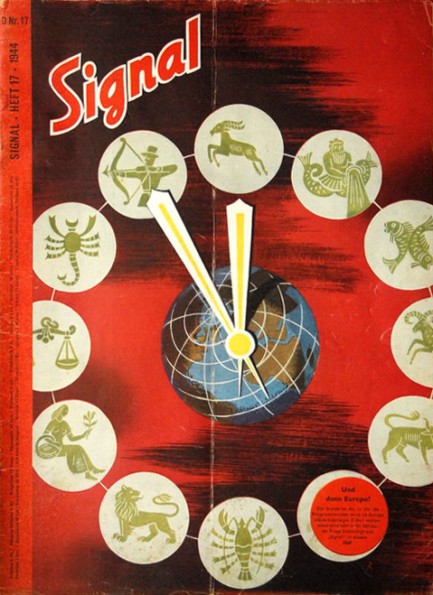



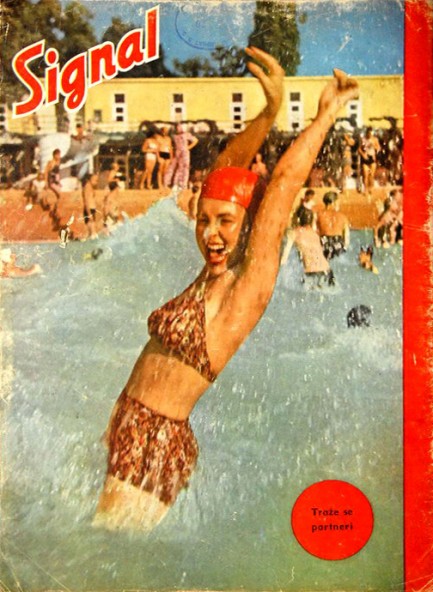
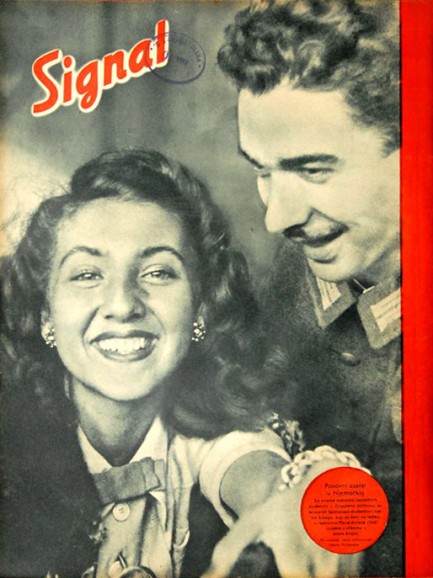
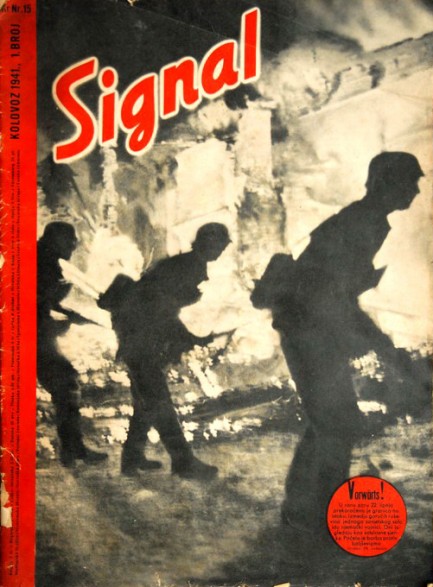
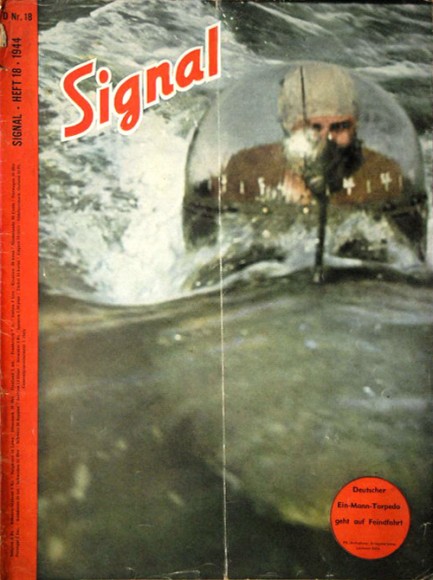

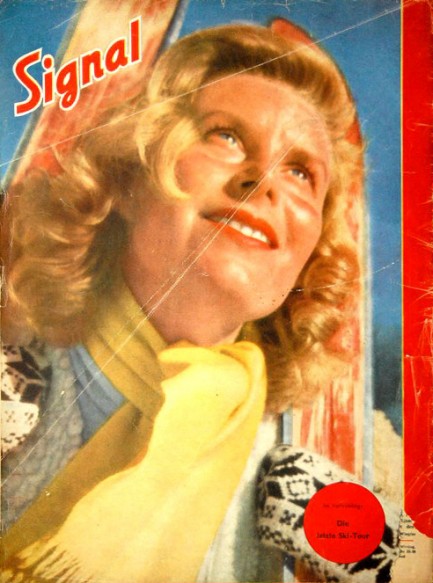
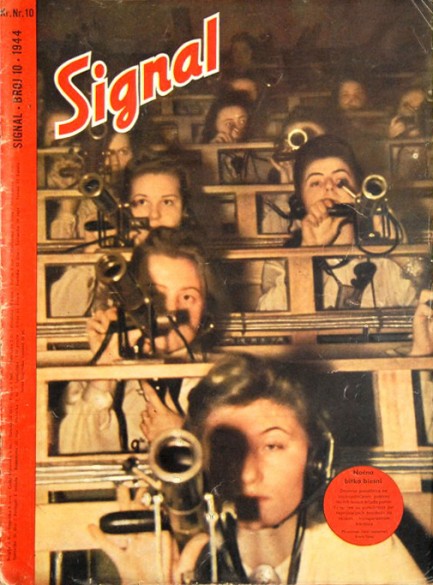
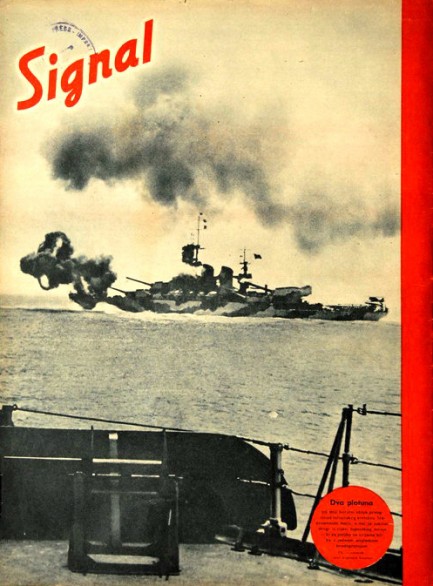

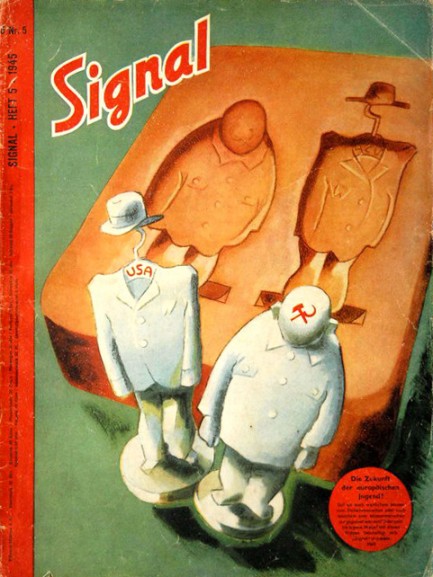
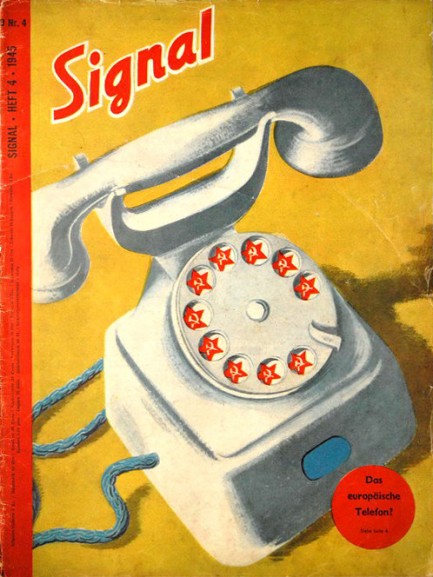
| Vintage Pulp | Apr 26 2013 |

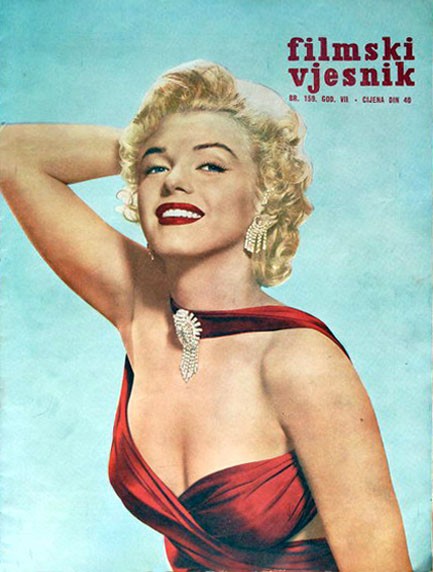
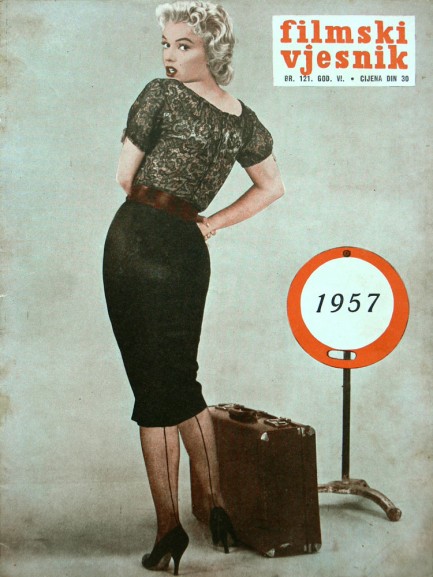
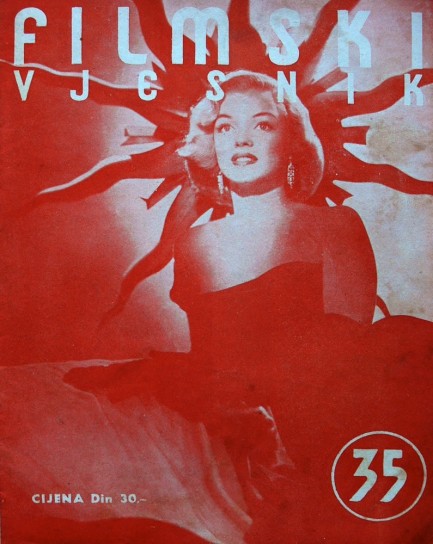
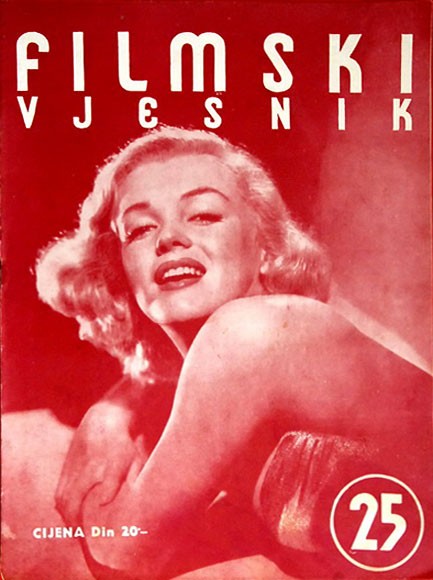
Above, Marilyn Monroe on four covers of Filmski Vjesnik, or Film Journal, a Croatian language magazine from the former Yugoslavia. You may remember we showed you a great ex-yu Monroe film poster a couple of years ago. Items from Yugoslavia are highly collectible these days, so much so that a couple of these magazines were priced at $250.00. That’s a lot for a publication of any vintage, even ones from dissolved nations, but when it comes to nostalgia you can never predict what people will pay. We’ve seen similar items sell at that price. These date from 1958, 1957, 1953 and 1953, top to bottom.
| Vintage Pulp | Nov 6 2011 |

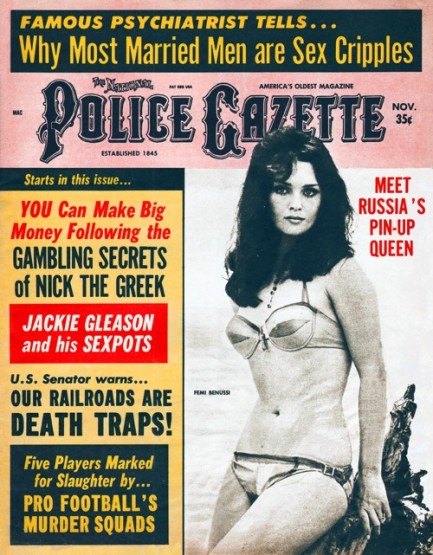
The National Police Gazette shows signs of fatigue in this November 1969 issue that is tellingly thin, with just 32 pages, and offers no stories of great interest. It has a Femi Benussi cover, which is a plus, but Benussi is labeled Russian even though she was actually born in what is now Croatia and acted in Italy. Seems like Gazette editors weren’t trying very hard. Once a tentpole of the tabloid market, the magazine was 125 years old by this point and losing readers. After one more month it would change its trademark cover style slightly to this, but the magazine continued to decline. Downmarket tabloids like National Enquirer had sprinted past the Gazette in celeb and scandal coverage, and its sports coverage now looked woefully inadequate compared to the glossy sports mags that were on the newsstands. Gazette hung on for seven more years, then quietly folded. We have thirteen more scans below, and many issues of Gazette from all stages of its long life to share later.
